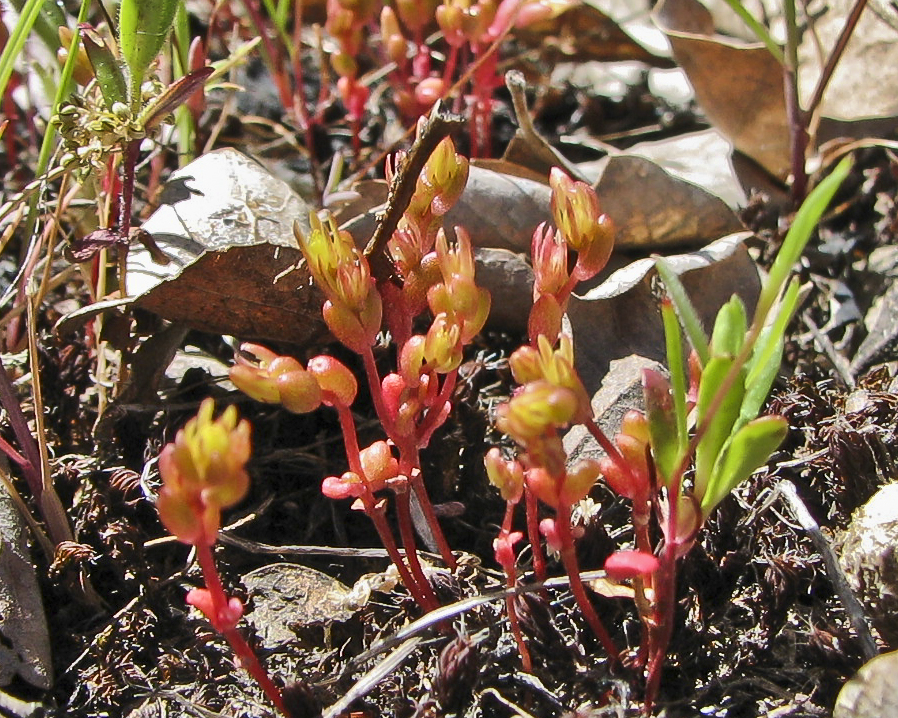
Sedella leiocarpa, photo by Cherilyn Burton ©
The California Department of Fish and Wildlife (CDFW) has initiated a five-year species review (Species Review) for the state endangered Lake County stonecrop (Sedella leiocarpa) to inform the California Fish and Game Commission's decision on whether to retain or change the status of the species under the California Endangered Species Act (CESA). As part of this process, the CNDDB would like to encourage anyone who has observed Lake County stonecrop to submit their findings to us. People who have questions or comments about the review process should email our Native Plant Program. The deadline to submit data and comments is October 20, 2023, to allow us sufficient time for evaluation.
Lake County stonecrop is an annual plant with only six known populations located approximately 10-24 km (6-15 mi) southwest of Clearlake, CA. This plant was originally listed as endangered and afforded protection under the California Endangered Species Act (CESA) in 1989 (Fish & G. Code, §2050 et seq.). The purpose of a Species Review is to use the best scientific information available to determine if the conditions that led to the original species listing are still present or have changed since listing, and recommend to retain or change the status of the species (Fish & G. Code, §§ 2072.3 & 2077). Process information, along with recently completed reviews, are available on our web page for Five-Year Reviews of Rare, Threatened and Endangered Species. Take of this species is prohibited without an appropriate permit for scientific, educational or management purposes. For more information on permitting, visit our CESA permits web page.
We need your help in better understanding the endangered status of Lake County stonecrop. If you have ever found them in the wild, submit your findings to us through our Online Field Survey Form.